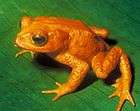Small population size
Small populations behave differently from larger populations. They often result in population bottlenecks, which have harmful consequences for the survival of that population.
Demographic effects
The influence of stochastic variation in demographic (reproductive and mortality) rates is much higher for small populations than large ones. Stochastic variation in demographic rates causes small populations to fluctuate randomly in size. The smaller the population the greater the probability that fluctuations will lead to extinction.
One demographic consequence of a small population size, the probability that all offspring in a generation are of the same sex, and where males and females are equally likely to be produced (see sex ratio), is easy to calculate: it is given by (The chance of all animals being females is ; the same holds for all males, thus this result). This can be a problem in very small populations. In 1977, the last 18 kakapo on a Fiordland island in New Zealand were all male, though the probability of this would only be 0.0000076 if determined by chance (however, females are generally more predated than males and kakapo may be subject to sex allocation). With a population of just three individuals the probability of them all being the same sex is 0.25. Put another way, for every four species reduced to three individuals (or more precisely three individuals in the effective population), one will become extinct within one generation just because they are all the same sex. If the population remains at this size for several generations, such an event becomes almost inevitable.
Environmental effects
Stochastic variation in the environment (year to year variation in rainfall, temperature) can produce temporally correlated birth and death rates (i.e. 'good' years when birth rates are high and death rates are low and 'bad' years when birth rates are low and death rates are high) that lead to fluctuations in the population size. Again, smaller populations are more likely to become extinct due to these environmentally generated population fluctuations than the large populations.
Genetic consequences
Conservationists are often worried about a loss of genetic variation in small populations. There are two types of genetic variation that are important when dealing with small populations.
- The degree of homozygosity within individuals in a population; i.e. the proportion of an individual's loci that contain homozygous rather than heterozygous alleles. Many deleterious alleles are only harmful in the homozygous form.
- The degree of monomorphism/polymorphism within a population; i.e. how many different alleles of the same gene exist in the gene pool of a population. Polymorphism may be particularly important at loci involved in the immune response.
There are two mechanisms operating in small populations that influence these two types of genetic variation.
- Genetic drift — Genetic variation is determined by the joint action of natural selection and genetic drift (chance). In small populations the relative importance of genetic drift (chance) is higher; deleterious alleles can become more frequent and 'fixed' in a population due to chance. Any allele, deleterious, beneficial or neutral is more likely to be lost from a small population (gene pool) than a large one. This results in a reduction in the number of forms of alleles in a small population and in extreme cases to monomorphism where there is only one form of the allele. Continued fixation of deleterious alleles in small populations is called Muller's ratchet, and can lead to mutational meltdown.
- Inbreeding — In a small population, related individuals are more likely to breed together. The offspring of related parents have a far higher number of homozygous loci than the offspring of unrelated parents.
There are two types of potential consequence of loss of genetic variation:
- Inbreeding depression — Inbreeding depression is usually taken to mean any immediate harmful effect, on individuals or the population, of a decrease in either type of genetic variation. Inbreeding depression can almost never be found in declining populations that were not very large to begin with; it is somewhat common in large populations becoming small though. The reason is purging selection, most efficient in populations that are strongly but not dangerously inbred.
- The ability of the population to adapt/evolve to changing conditions, “without variability evolution is impossible”. It is obvious that the absolute size of a population limits the absolute degree of allelic diversity. On the other hand, should an advantageous mutation arise, it is likely to show its effect sooner and more thoroughly.
The effective population size is commonly lower than the actual population size.
Examples of genetic consequences that have happened in inbred populations are bone abnormalities, low infant survivability, and decrease in birth rates. Some populations that have these consequences are cheetahs, who suffer with low infant survivability and a decrease in birth rates due to having gone through a population bottleneck. Northern elephant seals, who also went through a population bottleneck, have had cranial bone structure changes to the lower mandibular tooth row. The wolves on Isle Royale, a population restricted to the island in Lake Superior have bone malformations in the vertebral column in the lumbosacral region. These wolves also have syndactyly, which is the fusion of soft tissue between the toes of the front feet. These types of malformations are caused by inbreeding depression or genetic load.[1]
See also
- Critical dispensation
- Decline in amphibian populations
- Founder effect
- Minimum viable population
- Muller's ratchet
- Mutational meltdown
- Pollinator decline
- Population genetics
- Gene pool
- Genetic pollution
- Genetic erosion
- Functional extinction
References
- ↑ Raikkonen, J. et al. 2009. Congenital Bone Deformities and the Inbred Wolves (Canis lupus) of Isle Royale. Biological Conservation. 142: 1025-1031.
